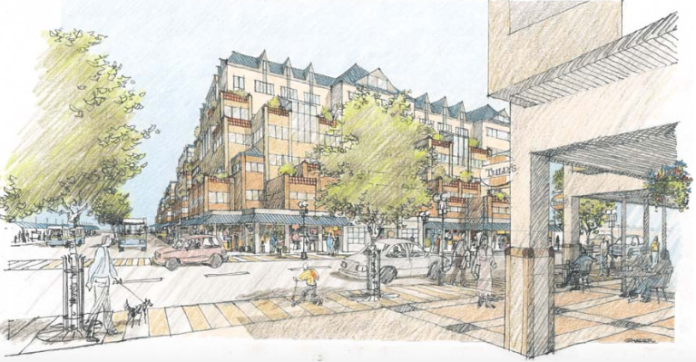When we warned of a stroad growing in Lynnwood due to highway widening plans, it cast a negative light on Lynnwood’s plans to develop a city center near its coming light rail station, due to open in 2023. Nonetheless, Lynnwood’s plan for its city center is still exciting.
The City of Lynnwood hired urban planner Dustin Akers to be the City Center Program Manager, and he and I met up to talk about Lynnwood’s plan and what was being done to make 196th St SW. Akers was hired a year ago and set about putting the 196th St SW project already well under way into triage mode. He pushed the Washington State Department of Transportation (WSDOT) to re-consider the road’s design and succeeded in downsizing some car-centric elements.
“Each of the lanes are now one foot shorter,” Akers said. “The BRT/BAT lanes are down to 12 feet, which is the minimum Community Transit requires for their BRT routes. The drive lanes are all at 11 feet instead of 12. That five additional feet of right-of-way allowed us to go ahead and complete the full section of sidewalk that they had limited down to ten feet as a cost saving measure for right-of-way acquisition.”
That means the sidewalks are 12 feet wide with tree wells spaced every 30 feet, as per WSDOT standard. Akers said the grates in the tree wells will be flush with sidewalk to allow more usable pedestrian space.
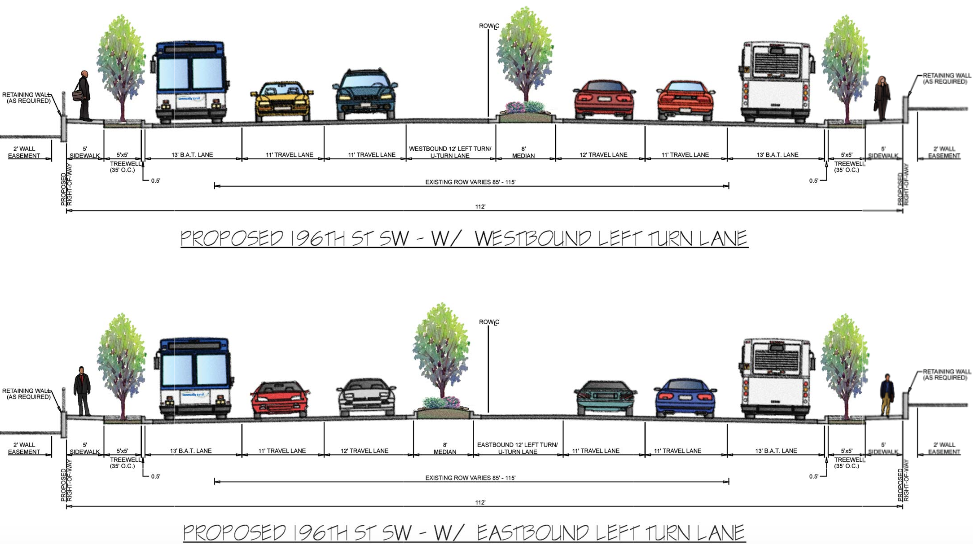
Skeptics might still contend that it’s a stroad, but the redesigned road will have more space for pedestrians, five feet shorter crossing distances, and hopefully less speeding due to the narrower lanes. It’s an improvement over the former plans at the very least.
Akers explained how WSDOT believes the road needed a seven-lane design because it’s one of the primary arterials to and from the city of Edmonds. It can carry upwards of 60,000 vehicles in daily traffic. 196th St SW goes by SR-524 in the state department’s eyes, with all the attending baggage.
The Lynnwood City Center plan could partially alleviate the mid-block crossing I highlighted since the plan calls for adding a new street, 42nd Ave W, to the street grid where we identify the four-block pedestrian crossing gap. 46th Ave W could also be extended south of 196th St SW.
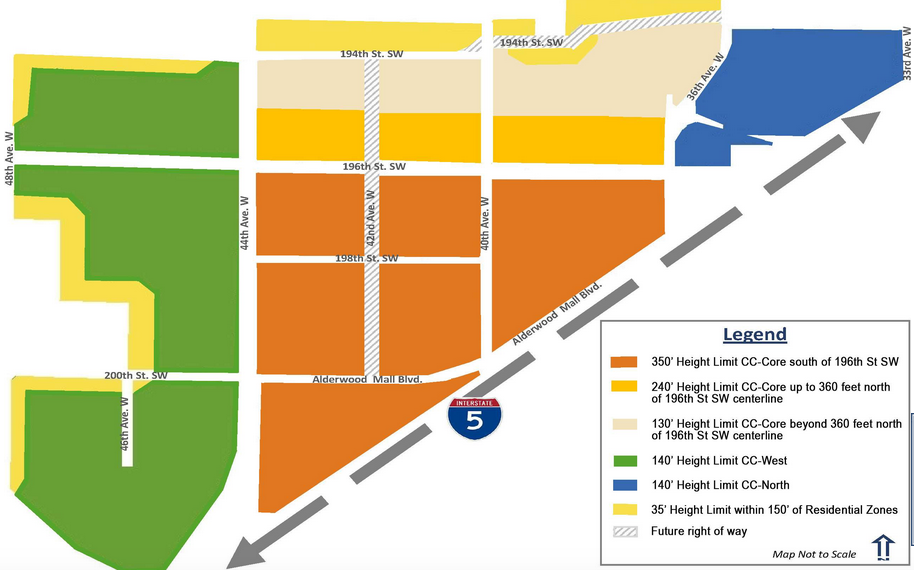
The Seattle Times covered Lynnwood’s ambitious plans the other week and included comments from a real estate economist skeptical Lynnwood would see development beyond five over one construction either though Lynnwood is zoned for 30-story towers.
Matthew Gardner, chief economist for Windermere Real Estate, doubts office towers will reach Lynnwood before the 2030s or 2040s. A 300-foot steel high-rise, at perhaps $600 a square foot, is far costlier than a six-story apartment building of wood and concrete, and Lynnwood currently lacks high property values to give developers a strong return on investment, he said.
Akers admitted initial projects might come in as five-over-one type construction, but also pushed back against the idea that Lynnwood wouldn’t see high-rise towers down the road and hinted there has already been some interest in building 13-story towers. Lynnwood secured a federal grant on transit-oriented development technical assistance and experts like Urban Land Institute predicted only five-over-one until the light rail station opens.
Lynnwood is doing what it can to kick start urban building. The City has expedited the permitting process by pre-approving SEPA review which can save years and could make the city more attractive for development. Much will depend when the first large market-rate project comes in to set rents for the area. Lynnwood has begun seeing large midrise projects but so far they have not been market-rate with a 308-unit senior housing project and another affordable housing project going in.
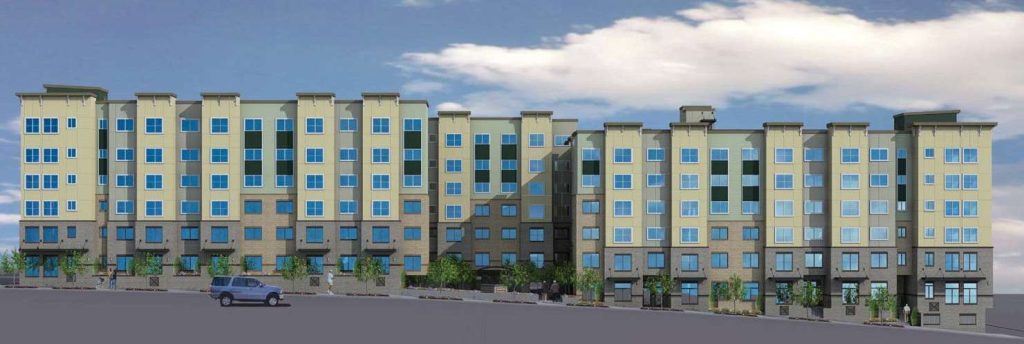
Of course that demand has everything to do with light rail. Lynnwood Transit Center will see light rail service by 2023 and now, with the passage of ST3, Lynnwood will get a second station at West Alderwood Mall and a third just outside its borders at Ash Way. Sound Transit is just beginning to gather feedback on its latest station designs for the Lynnwood Link extension. Akers suggested more could be done to beautify the station and integrate it with the rest of the future city center. You can share your feedback here on the website.
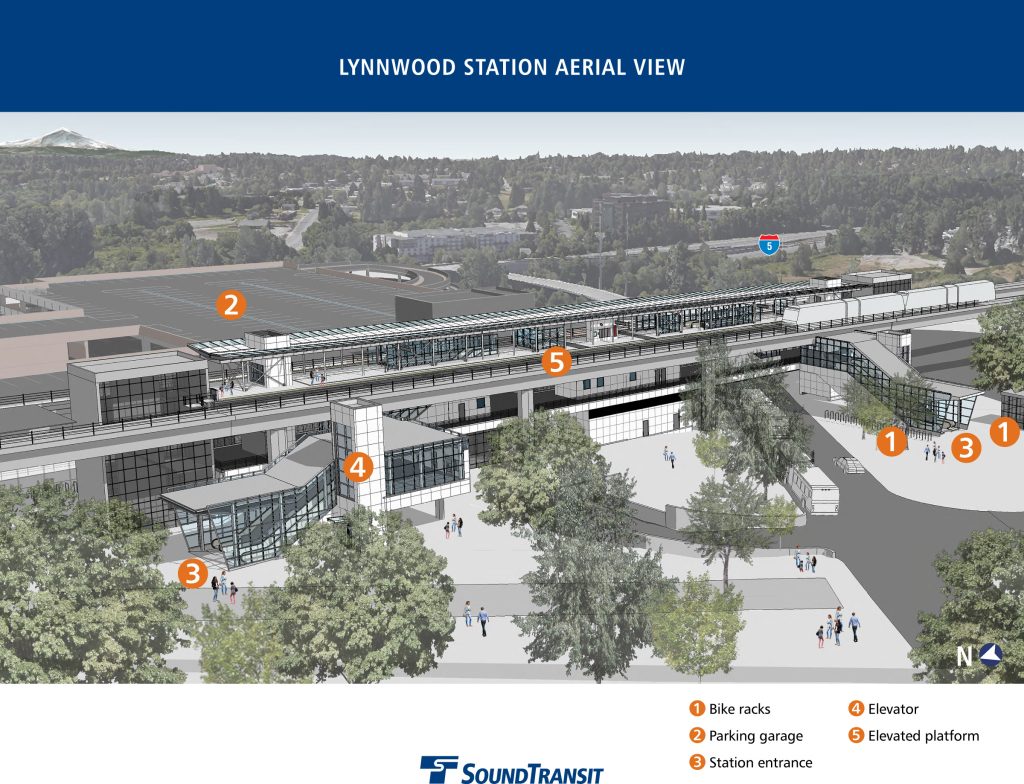
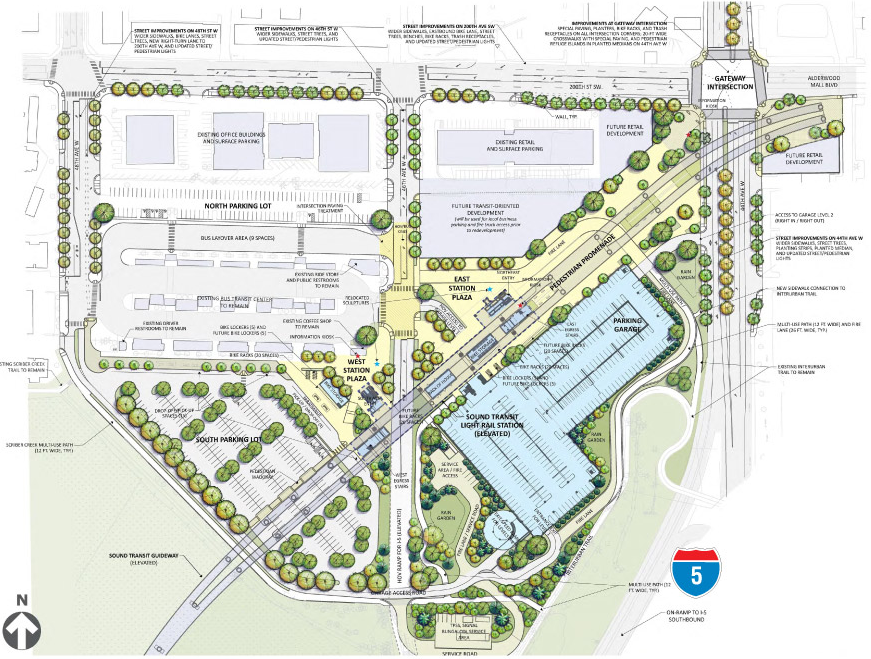
Doug Trumm is publisher of The Urbanist. An Urbanist writer since 2015, he dreams of pedestrian streets, bus lanes, and a mass-timber building spree to end our housing crisis. He graduated from the Evans School of Public Policy and Governance at the University of Washington in 2019. He lives in Seattle's Fremont neighborhood and loves to explore the city by foot and by bike.

